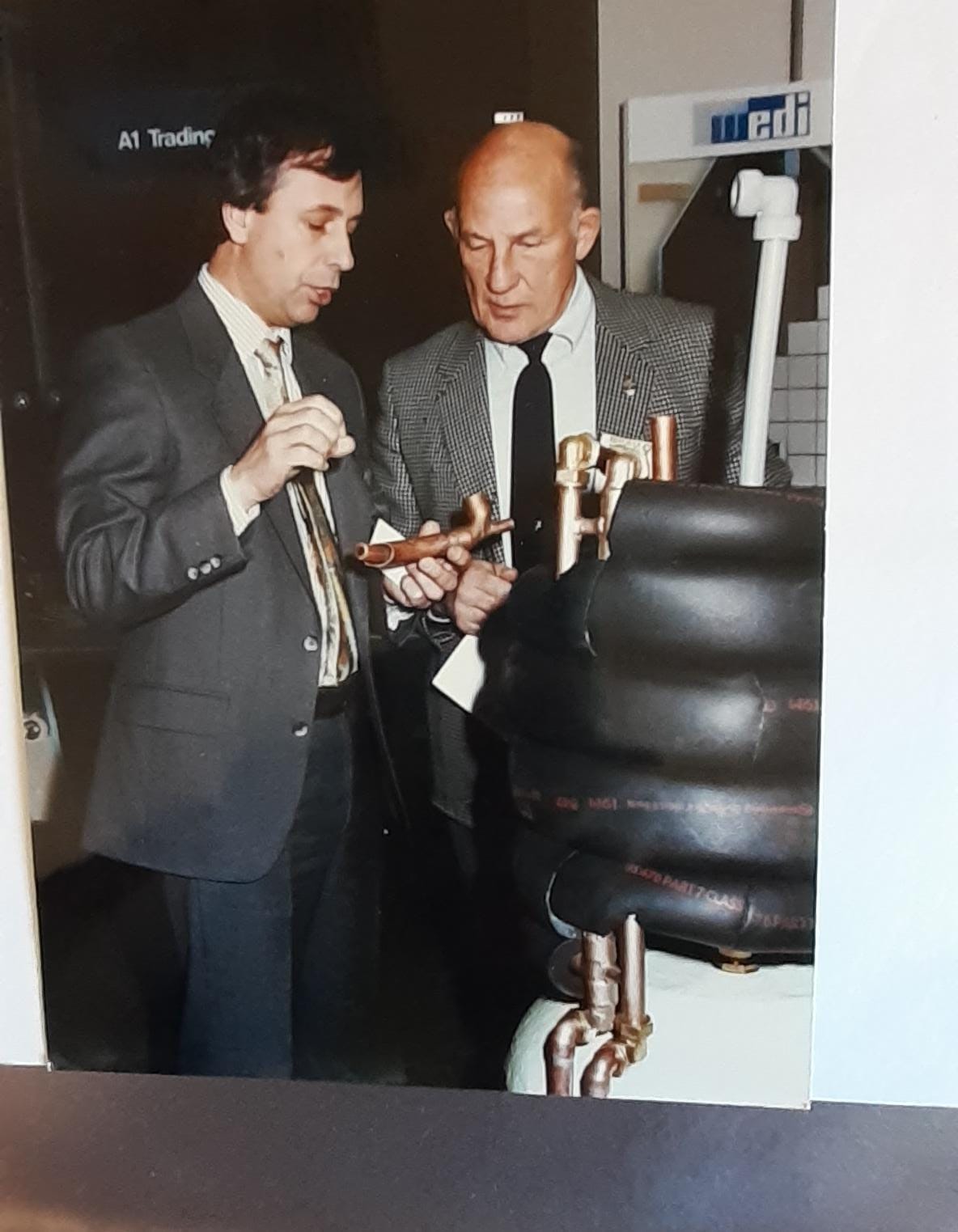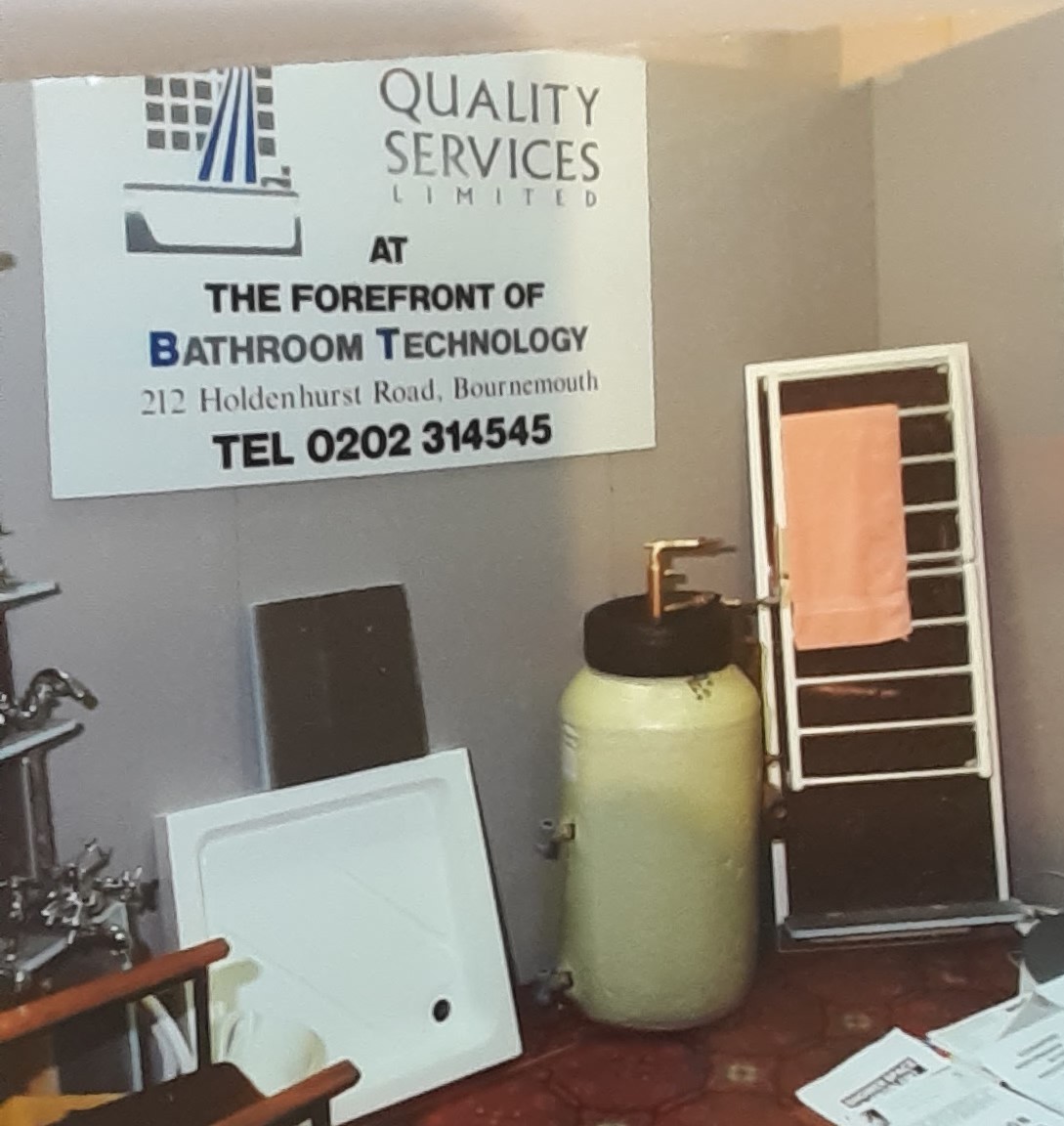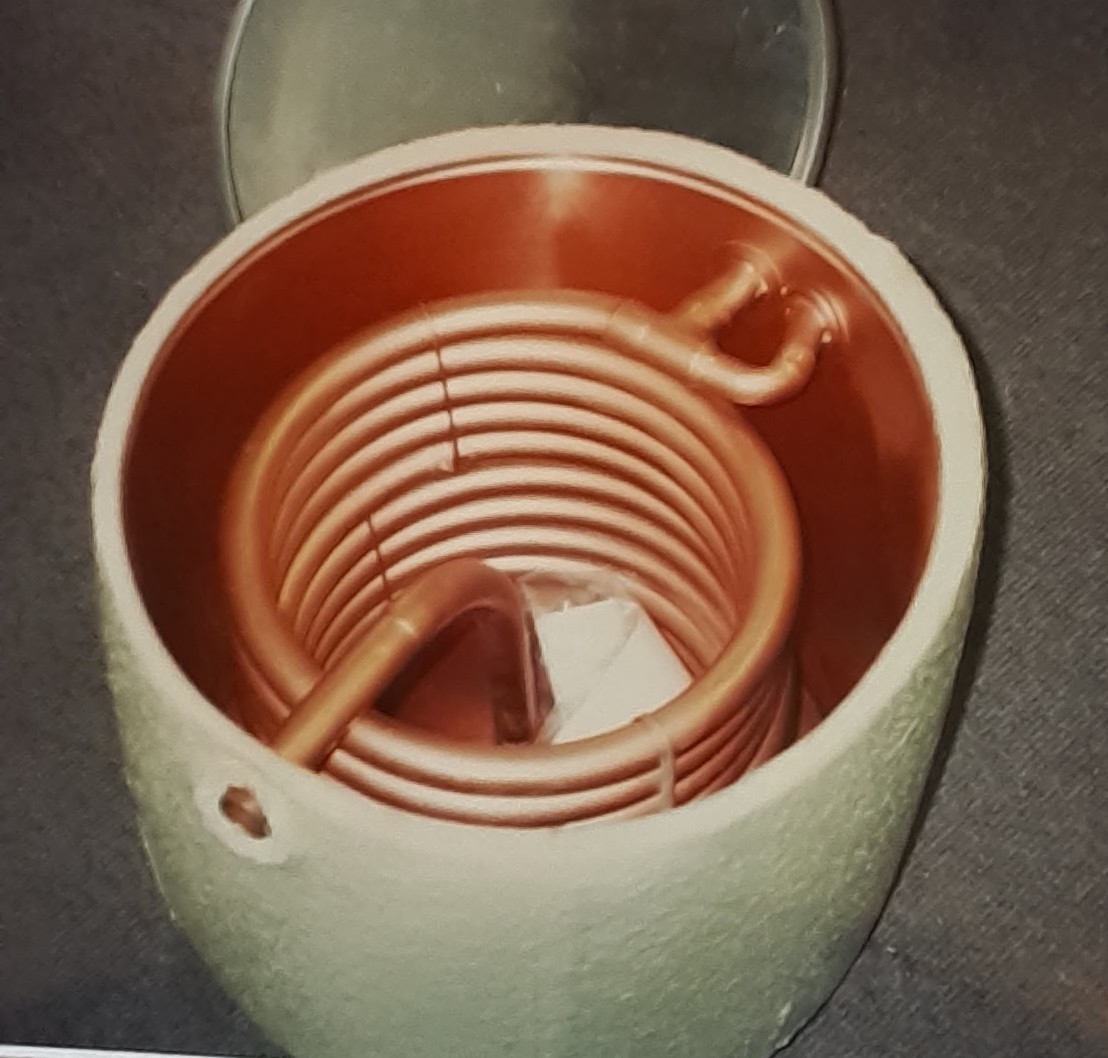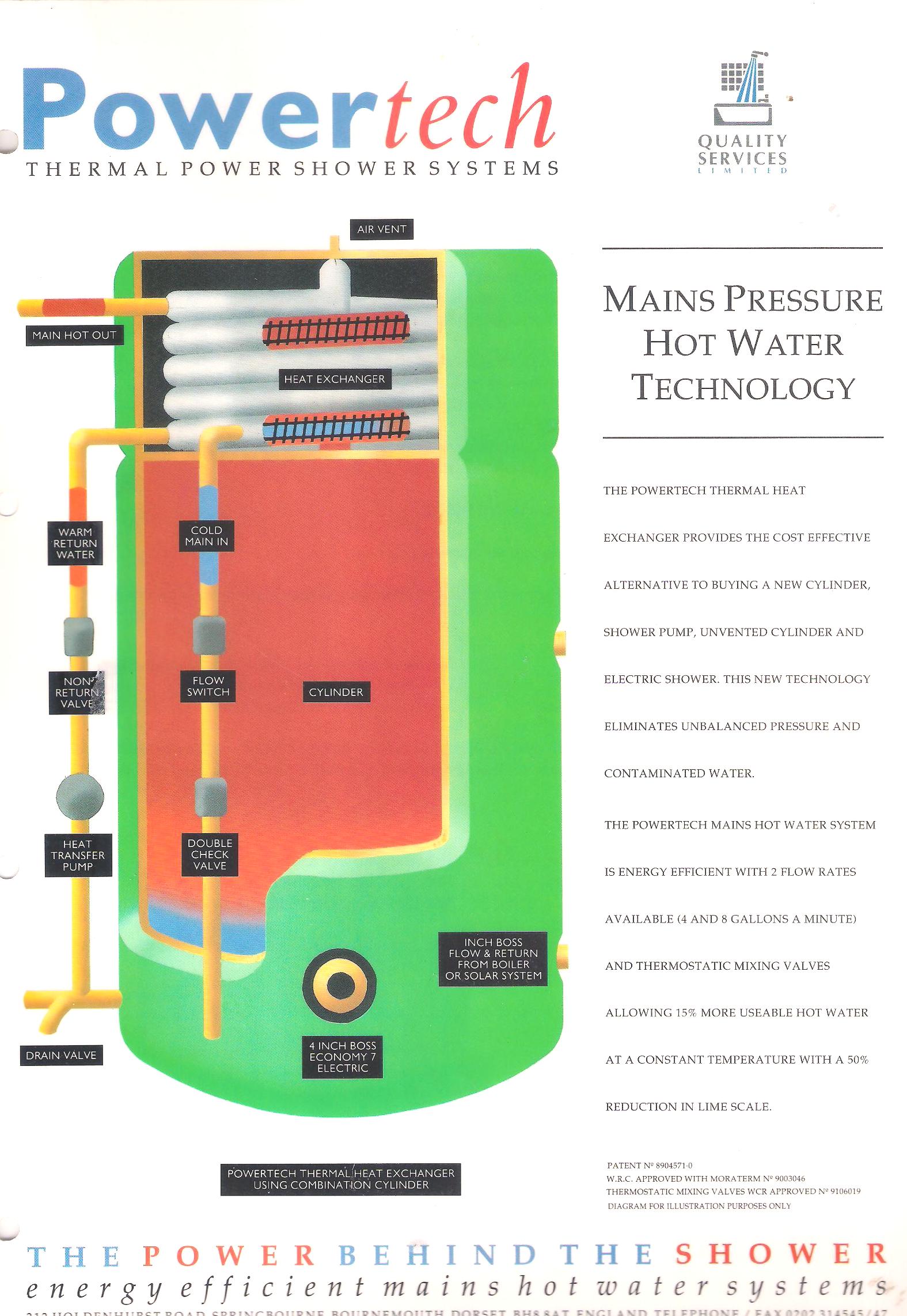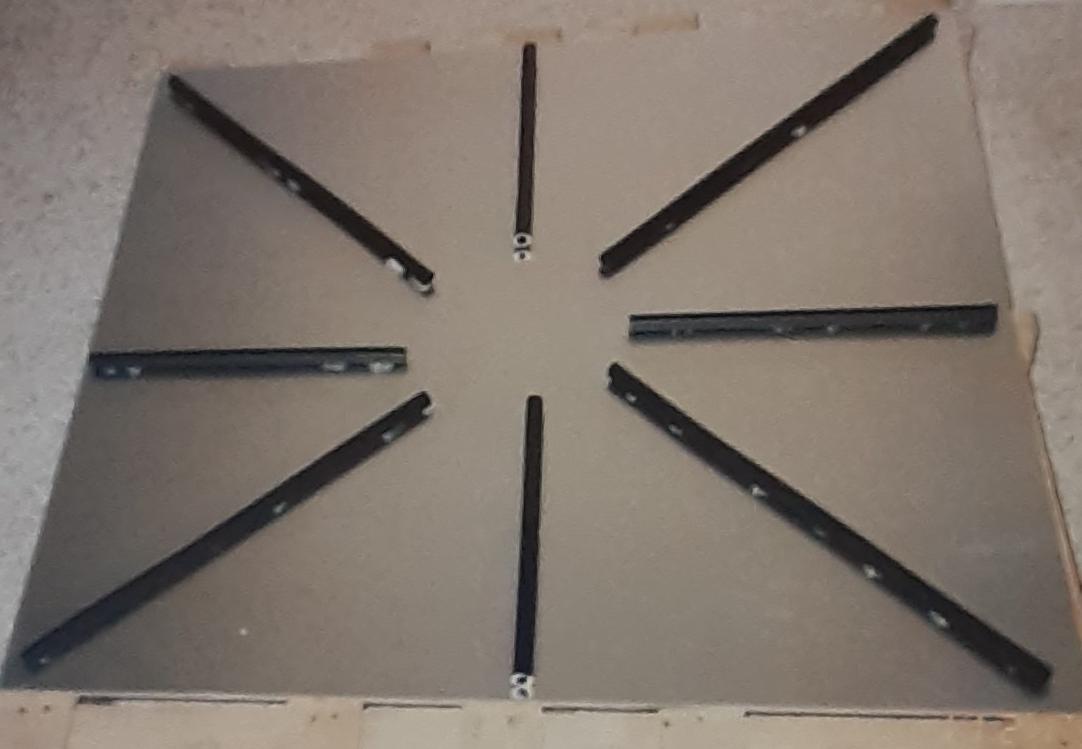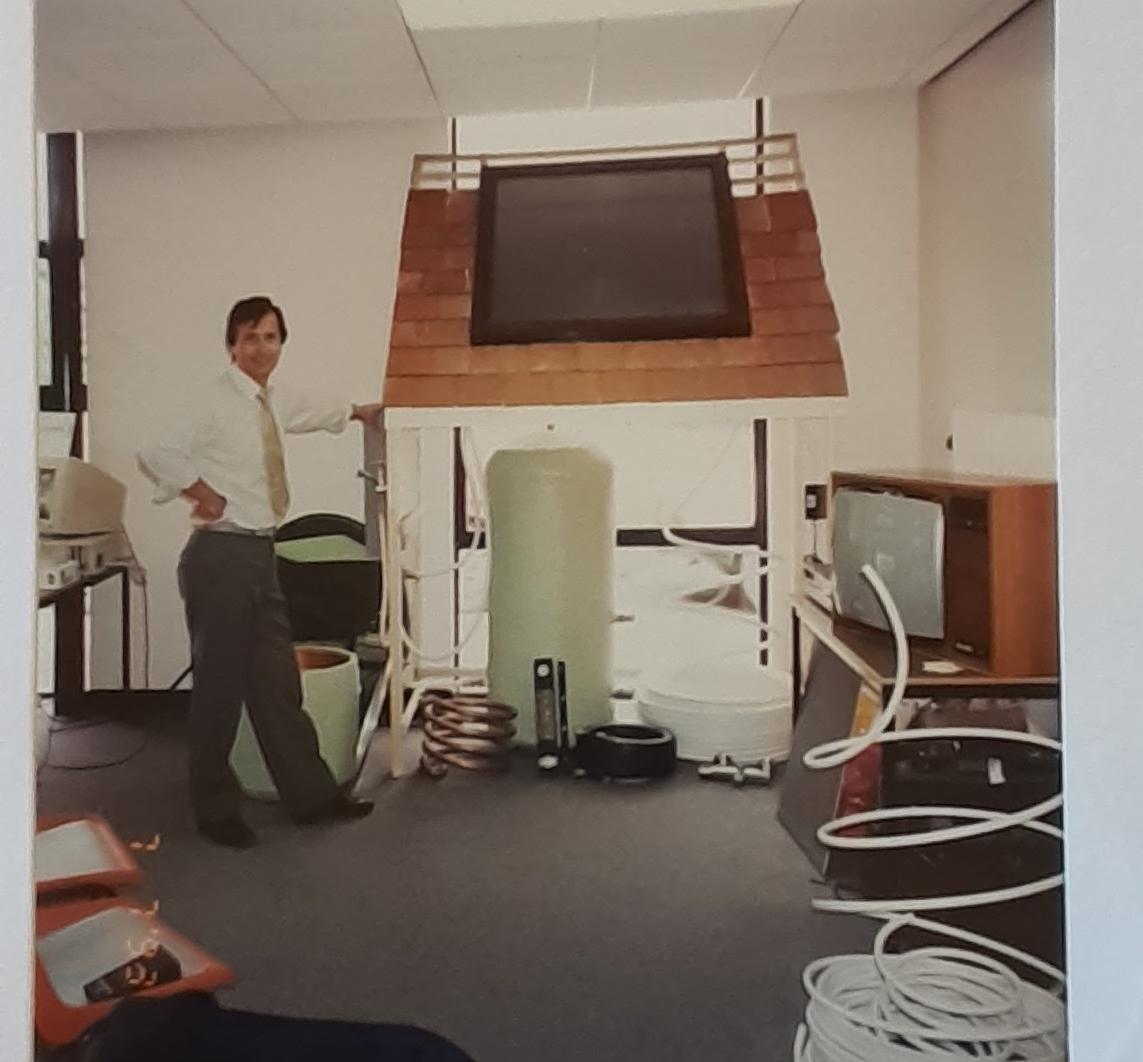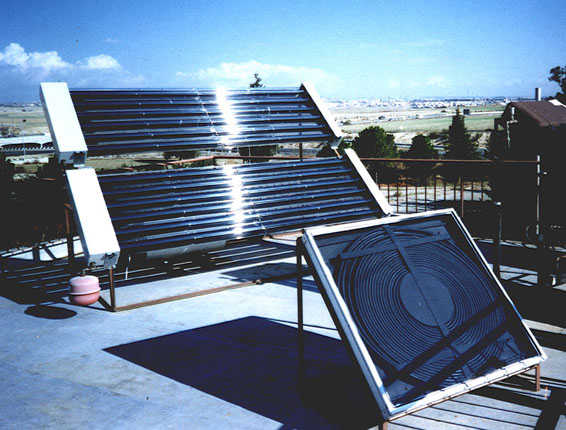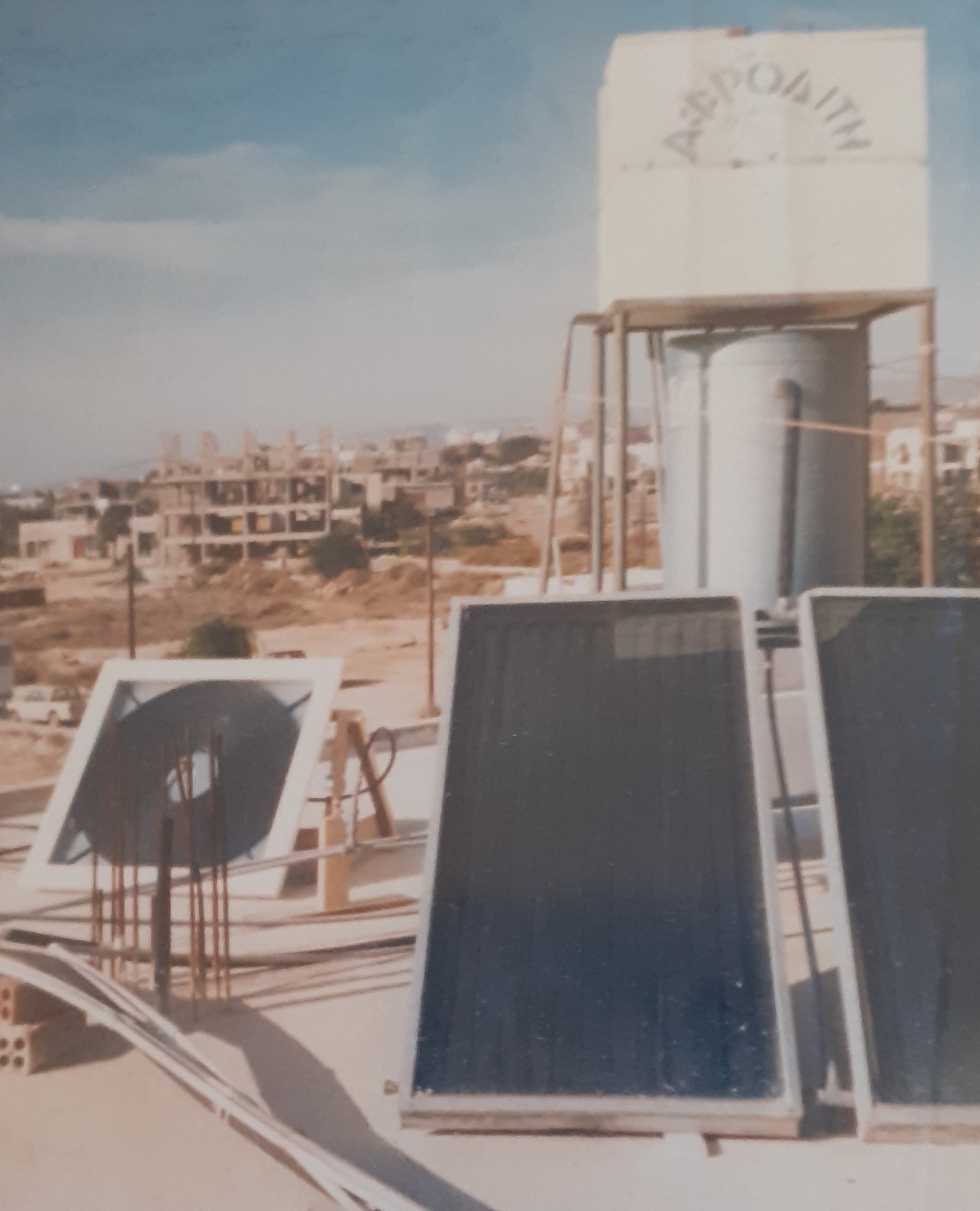The design of my first alternative to a regular open vented
cylinder to a thermal store came about during my years as the owner of
Bathrooms of Bournemouth, which I sold off in 1990.
In those days, to have a supply of hot
water at mains pressure you needed pump, which was plumbed into the hot water out of the top of open
vented copper cylinders.
Often dedicated to providing a good shower, which is what most home owners wanted.
It was towards the end of my days owning Bathrooms of Bmth I paid to go on a G3 unvented plumbing course, as the first combi boilers were being imported along with unvented HW pressure cylinders.
During the 3 days we watched a video which showed an overheated unvented cylinder explode through the wall of a USA house ending up 500 yds down the garden. It was at that point I was put off by the idea of selling them.
It was also during this time that a copper smith was demonstrating a new type of cylinder (still open vented) but with a twin copper coil inside, and a regular circulating pump plus flow switch on the outside.
I later found out the outer the 4m of copper coil was 28mm, with a integral finned copper tube of 18mm inside.
How it worked was simple
The mains water flowed through the inner finned copper tube and
flowed out at the other end to the taps/shower ect.
But to heat up the cold mains water as it flowed through the 18mm copper pipe you needed heated cylinder water.
Once a HW tap was turned on, the pump would start up via the flow switch located on the so the pump with a flow switch located on the mains water side.
The pump located on the HW cylinder side, which circulated the hot water (heated by a gas/oil boiler to 70c) from the top across the finned coil inside the 28mm outer copper coil. This water then returned to bottom of cylinder to be re heated.
As long as the pump circulated the store water in one direction and mains water flowed through opposite direction, you could receive volumes of hot water at mains pressure.
These new hot water cylinders were sold through plumbers merchants in a number of litre volumes, but within 1 yr, the manufacture went into administration
The reason, was that the untrained, uneducated plumbers were
used to buying the lowest price hot water cylinder, not what was the right size for a family’s
needs with this NEW type of delivery of hot water.
In most cases the cylinder size purchased was under sized, and unless there was enough heated store water, the hot water supplied indirectly would soon run out.
I did love the concept, so went to meet the copper smith in Birmingham to see how his twin coil idea could work as a retrofit.
As they say, the rest is history, but this was just the start of my story, how i then became interested in solar thermal.
The twin heat exchanger coil started off as a retrofit to an
existing open vented copper cylinder as shown in centre picture, which I
entered into a southern competition, to which Sir Stirling Moss was a judge. He
later invited me to his house to see if it work for his own needs.
Two London
exhibitions later, with comments from Plumbers (looks ugly), I went ahead with
the design in the right hand picture, which was then packed with rock wool for
insulation. This was designed to fit over an existing cylinder, to look pretty!
This was later followed by a 200L combination copper vented cylinder, where the cold water store part that filled the cylinder was used as shown in Picture 3, but an all-in once Thermal Store. In these early days, was only to provide hot water at mains pressure, as an alternative to a noisy pressure pump.
This was the begining of what today I call a Multi Fuel Thermal Store
It was during the early sales in 1991, that I began to check the incoming cold water temperatures from the mains supply, after a home owner complained about the temperature of the hot water after weeks of ground frost and freezing weather. Very few home owners know the temperature spread between heights of summer to depths of winter. My testing even today shows the mains incoming water at the height of the winter after weeks of frosts can be as a low as 6c in the South.
At the height of the summer expect be around 16c around July time, after the ground has had time to warm up from long days of overhead sun. The sea is always its warmest late August early September. It was this very cold mains temperature that affected the overall hot water flow out through the twin coils. The only answer to this was increase the temperature of the gas/oil boiler to 75c from 65c.To have a constant flow of hot water out at mains pressure, the boiler needed to continue to put heat in as fast as you were drawing it out. A Temperature mixer valve (TMV) was always recommended to even out the high and low temperatures.
The easy answer was to heat the store to a higher temperature through the winter and reduce the store in the summer, but that increased home owner’s energy bills, so my next thought was to research the use of solar thermal as a pre heat of the cold water to reduce the store temperature.
What came next is how I ended up the expert I am today in Solar Thermal
I set about researching solar thermal to look for a low
cost way to pre heat the cold mains water, before passing through my twin
copper coil exchanger.
All I found in the UK market was expensive and
complicated systems from flat plate collectors to large imported evacuated tube
collector from Japan. My first and only attempt at producing my own collector
started with a visit to a Window/conservatory manufacture locally for the boxed
frame, then a glass manufacture for the K glass, which retained the heat. I
then needed a Pex Al Pex pipe able to be open to the hot sun, so had to be UV
protective, which I found in Israel. Aluminium sheet place on 20mm insulation
board, then short lengths but and hot glued to the aluminium I then created a
very tight ring Catherin wheel affect,
with each ring hot glued to the next for a maximum length of 12-16mm pipe.
You
can see the result in bottom left picture, taken in Cyprus, where in 1993 after
shipping a 40ft container of over 100 products, I ended up moving there with my
wife after closing down my UK business and selling the house. It was at that
time, the importer of large evacuated tubes (background of lower picture on the
left shared with me a picture of the 4 tube batch water heater, also evacuated
tube, but with stored water at mains pressure.
I was asked to test this in Cyprus, after the importer knew that was my plans for 6 weeks, which ended up as 5yrs.I am now at the end of this first stage of my plumbing to bathrooms, to thermal store and solar thermal in these pages, follow the rest in the other listed pages, I am now working on.
